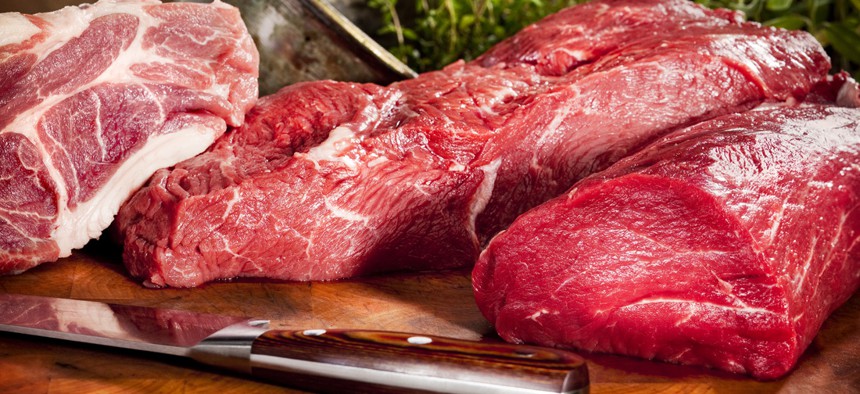FDA Report Shows The Most Common Sources of Food Poisoning
Around 48 million people who get foodborne illnesses in the United States each year.
A late-night roiling stomach is cause for frenzied reflection. After wondering if you’re getting sick, your thoughts will likely wander to your most recent meal, prompting that anxiety-inducing question: “Was it something I ate?”
If it was, you’d be among the 48 million people who get foodborne illnesses in the United States each year. And a new report by the Interagency Food Safety Analytics Collaboration offers some insight on what these 48 million people are likely to have eaten before getting sick. When the IFSAC was created in 2011, it was tasked with getting better data on where foodborne illnesses are coming from, and this report is the first one using the group's "improved method."
The report looks at four major pathogens that the IFSAC (a joint effort by the Food and Drug Administration, the Centers for Disease Control and Prevention, and the Department of Agriculture) considered “high priority”: E. Coli 0157, Salmonella, Campylobacter, and Listeria. These bacteria are among the most common and most severe types that cause foodborne illness, but, as the FDA wrote in a press release, “targeted interventions can have a significant impact in reducing them.”
The researchers primarily studied outbreaks from 2008 to 2012, bolstering the set with data from older outbreaks to make sure they included foods that may not have caused outbreaks within that five-year period, but may have still transmitted some illness.
These were the most common foods responsible for transmitting each of the pathogens:
E. Coli
- Beef: 46 percent
- Vegetable row crops: 36 percent
Salmonella
- Seeded vegetables: 18 percent
- Fruit: 12 percent
- Eggs: 12 percent
- Chicken: 10 percent
- Beef: 9 percent
- Pork: 8 percent
- Sprouts: 8 percent
Campylobacter
- Dairy: 66 percent
- Chicken: 8 percent
Listeria
- Fruit: 50 percent
- Dairy: 31 percent
This data gives some insight on where to focus efforts to fight food poisoning caused by these four bacteria. But it also reveals some challenges—for example, it’s a lot easier to zero in on just a couple causes, like E. Coli’s beef and row vegetables, than it is to try and battle the broad, diffuse reach of Salmonella.
Campylobacter occurred in small percentages in seafood and vegetables as well as chicken, but dairy had the overwhelmingly highest rate of the bacteria. The report attributes this to raw, unpasteurized milk and cheeses.
Dairy was also a big hitter for Listeria, but the report notes that there weren’t that many outbreaks to go on. For example, the high percentage attributable to fruit came mostly from an outbreak caused by cantaloupes in 2011.
It’s hard to predict where or when an outbreak of one of these illnesses will occur, and of course one shouldn’t live in fear of one’s dinner, but if your stomach starts to cramp and churn between a few hours and a few days after eating one of these foods, it’s possible it was something you ate.
(Image via Alias Studiot Oy/Shutterstock.com)



